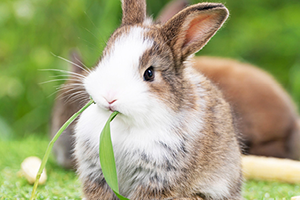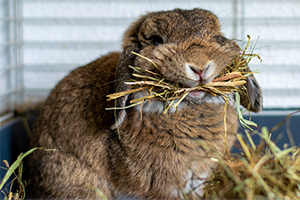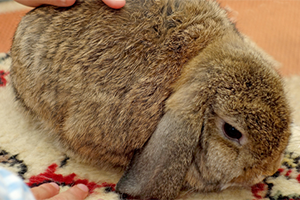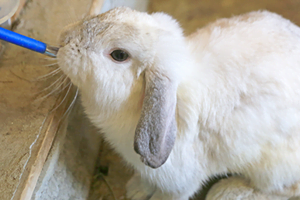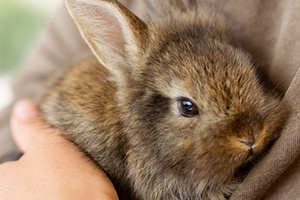A guide to rabbit pregnancy
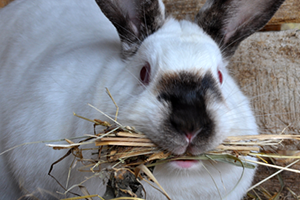
Quick Links
When can rabbits mate?
Rabbit pregnancy signs
You can tell if your rabbit is pregnant in several ways:
- Nest building – does instinctively build a nest using hay or straw when they are pregnant
- Fur pulling – soon-to-be mothers pull their own fur out to use as a blanket to keep the babies warm
- Aggressive behaviour – your rabbit may growl defensively, or refuse to be petted or stroked
If you think your rabbit might be pregnant, we recommend taking them to the vet, who will be able to confirm or deny any suspicions.
Preparing for the new arrivals
During pregnancy, the mother rabbit will need lots of clean water and nutritious food, including dark leafy greens, alfalfa hay and rabbit pellets.
Rabbits sometimes dig a burrow in which to give birth – if you want to avoid this happening, make sure that your rabbit has a proper nest box and plenty of privacy to make sure she is as relaxed as possible.
Rabbit labour
A rabbit’s gestation period is typically between 31 and 33 days.
When a doe gives birth, it is called kindling. Kindling takes around 15 minutes and usually occurs in the early hours of the morning. The process of giving birth is instinctive and obstruction is virtually unheard of.
After checking on the babies, try to leave the nest alone for the first few days – disturbing a mother rabbit can cause her distress, and she may stop feeding her young.
If you have any concerns, contact your vet.
Rabbit litters
Baby rabbits are called kits, and there can be up to 14 kits in a litter, with six being the average number. They are born hairless, blind and deaf, but, after 10 days, they will begin to develop features.
The doe will nurse her kits twice a day at dawn and dusk, which only takes around five minutes due to the rich quality of the mother’s milk.
Kits are usually fully weaned when they are between four to six weeks old. You should continue to keep a female rabbit separate from males during this time, as female rabbits can be re-impregnated hours after they have given birth. This means that one doe could produce up to 13 litters a year, but this isn’t ideal for her health – a safe average is eight to ten litters a year.
Space for the doe
Rehoming the infants
The kits can leave their mother at around eight weeks after their birth, at which stage you can look at rehoming them.
When looking for their new homes, check that potential owners have clean, spacious accommodation and that a responsible adult will be on hand to feed them a healthy diet and be able to cover any medical costs, including vaccinations and neutering.
False rabbit pregnancies
Neutering
Petplan is a trading name of Pet Plan Limited (Registered in England No. 1282939) and Allianz Insurance plc (Registered in England No. 84638), Registered office: 57 Ladymead, Guildford, Surrey GU1 1DB.
Pet Plan Limited is authorised and regulated by the Financial Conduct Authority. Financial Services Register No. 311969. Allianz Insurance plc is authorised by the Prudential Regulation Authority and regulated by the Financial Conduct Authority and the Prudential Regulation Authority. Financial Services Register No. 121849. Pet Plan Limited is a subsidiary of Allianz Insurance plc.


